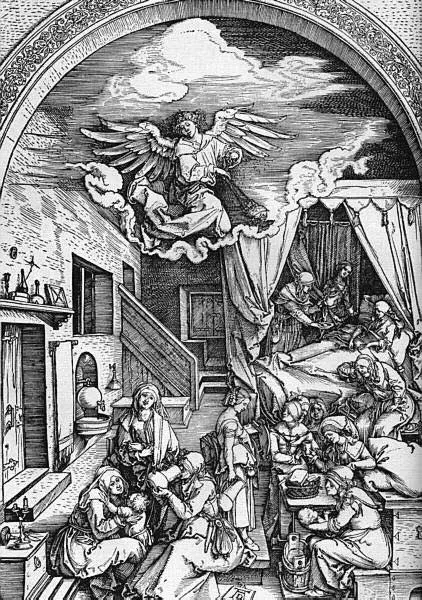Engraving
(fr. graver — "cut") is a type of graphic image created by printing. The prints are obtained by applying images from a board to paper, each print is an exclusive work. The art of engraving includes the following types:
— linocut is a protruding image created by applying paint to linoleum up to 5 mm thick followed by imprinting on paper. Allows creating large-scale artwork with clear contrasts of white and black.
— woodcut is the oldest type of engraving, which became widespread in the Far East in the 7th century. It suggests making impressions from a wooden board. Before the invention of this type of engraving, stones were used as a surface for applying paint.
— copperplate print is engraving on a copper plate. Known from the first half of the 15th century. The drawing is applied to the metal with sharp incisors, then the fresh furrows are filled with paint by means of a roller. The background is cleaned of ink and the resulting pattern is imprinted on paper.
— etching (or French eau-forte — "strong water") is engraving on metal, invented in the 16th century. The image is first scratched onto a metal plate using a needle. Acids are applied to the depressions of individual fragments, after which they are filled with paint and a print is created on damp paper using a special machine. Etching varieties include dotted line, dry point, mezzotinto, aquantine, reserve and soft varnish. They are defined by how the scratches are applied to the metal.
— engraving on cardboard is the most technologically accessible form of obtaining a graphic image through print. The picture is created by applying parts cut from cardboard and covered with paint to paper.
— seriography (lat. serikus — "silk") is a method of obtaining multiple prints of one good quality print using silk mesh.
— linocut is a protruding image created by applying paint to linoleum up to 5 mm thick followed by imprinting on paper. Allows creating large-scale artwork with clear contrasts of white and black.
— woodcut is the oldest type of engraving, which became widespread in the Far East in the 7th century. It suggests making impressions from a wooden board. Before the invention of this type of engraving, stones were used as a surface for applying paint.
— copperplate print is engraving on a copper plate. Known from the first half of the 15th century. The drawing is applied to the metal with sharp incisors, then the fresh furrows are filled with paint by means of a roller. The background is cleaned of ink and the resulting pattern is imprinted on paper.
— etching (or French eau-forte — "strong water") is engraving on metal, invented in the 16th century. The image is first scratched onto a metal plate using a needle. Acids are applied to the depressions of individual fragments, after which they are filled with paint and a print is created on damp paper using a special machine. Etching varieties include dotted line, dry point, mezzotinto, aquantine, reserve and soft varnish. They are defined by how the scratches are applied to the metal.
— engraving on cardboard is the most technologically accessible form of obtaining a graphic image through print. The picture is created by applying parts cut from cardboard and covered with paint to paper.
— seriography (lat. serikus — "silk") is a method of obtaining multiple prints of one good quality print using silk mesh.








